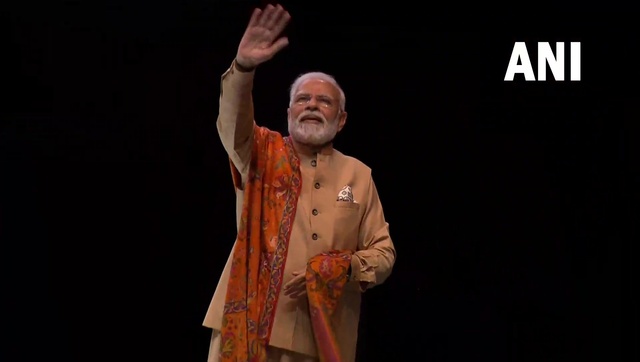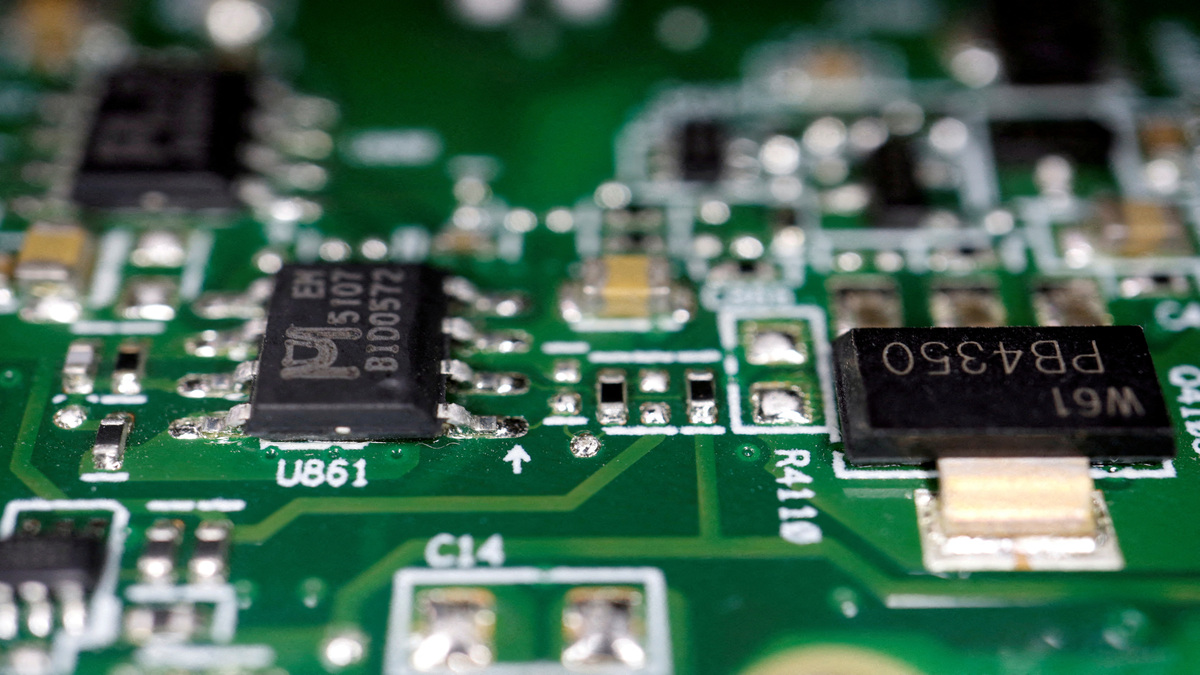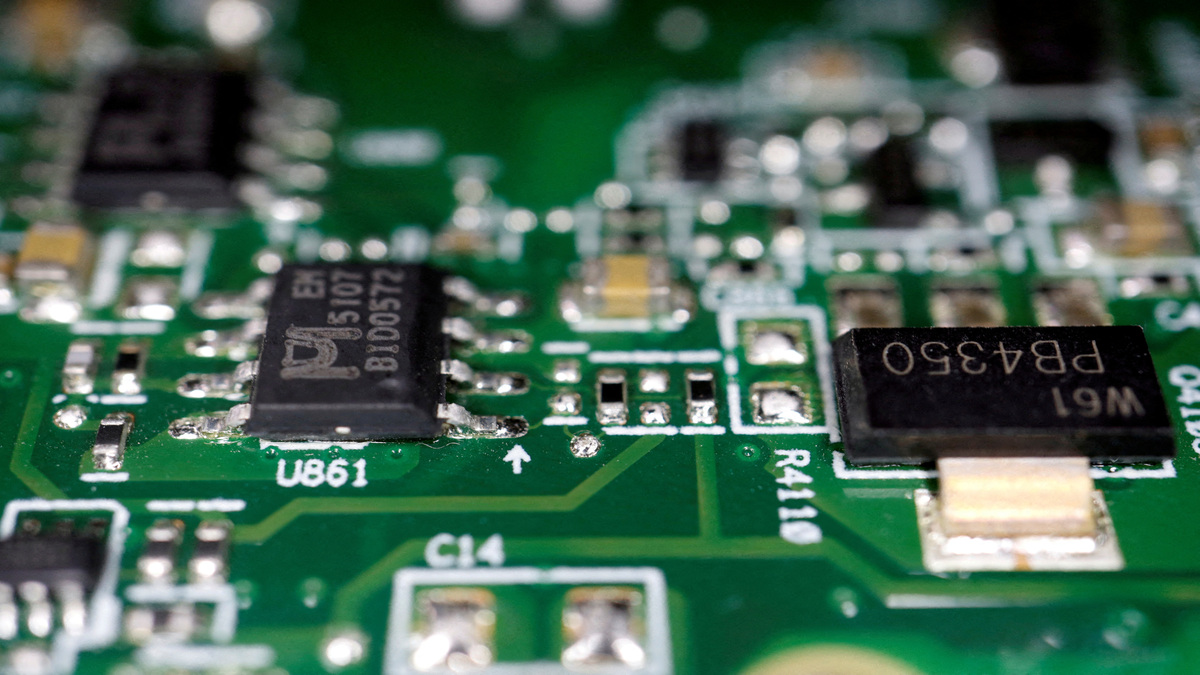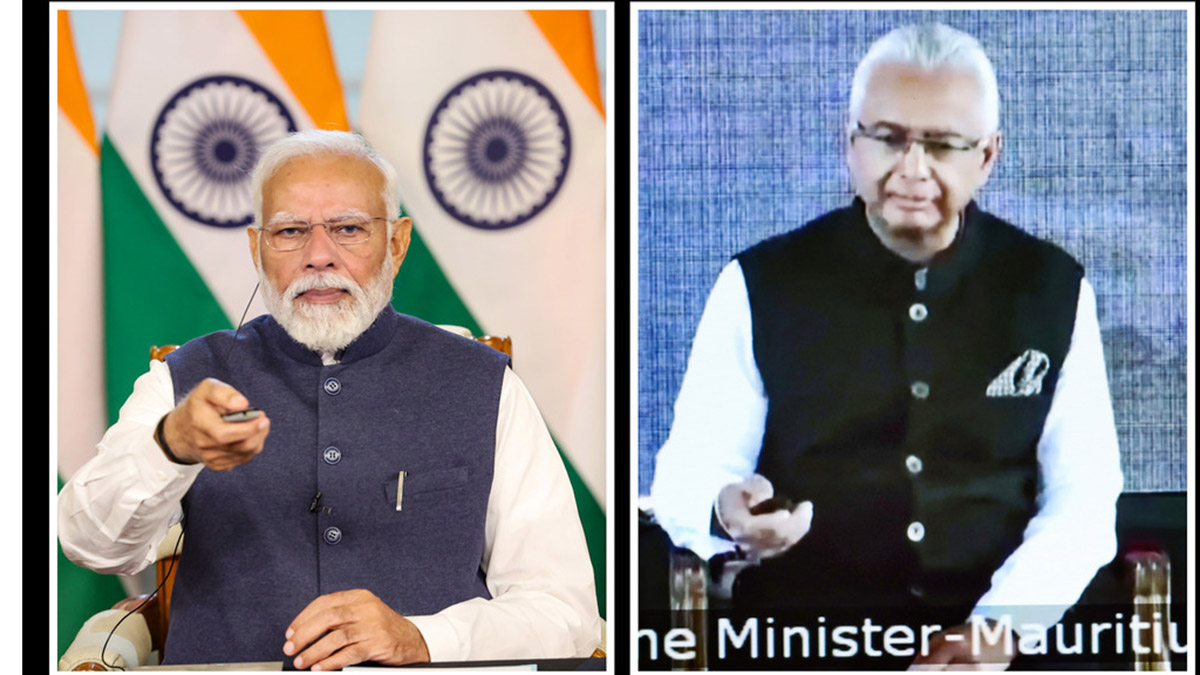During a media conference last month in Washington post the 2+2 meeting, India’s external affairs minister S Jaishankar was at the receiving end of one more question on India’s buying of Russian energy, prompting him to quip: “We do buy some energy which is necessary for our energy security. But I suspect, looking at the figures, probably our total purchases for the month would be less than what Europe does in an afternoon .” The minister wasn’t bluffing. Europe, especially Germany, is effectively bankrolling Putin’s war.
Since Putin’s decision to launch an invasion, the Ukraine issue has been a persistent thorn in the flesh of rapidly energizing India-EU ties that saw a ‘reset’ last year with the EU-India leaders’ meet in May. Prime minister Narendra Modi had joined in through video conference to meet heads of 27 EU member states assembled in Porto , and that epochal moment not only resurrected the stillborn FTA negotiation process, it had also marked a moment when both sides turned serious about the relationship. Yet the persistent background noise on divergence over Ukraine has threatened to overshadow some real progress on the ground.
In the early days of the war, the European Union had served as a demarche to India, putting pressure on New Delhi to take a “strong position” on Russia. Europe’s Indo-Pacific envoy landed in India to say that the EU was “not pleased” by New Delhi’s abstentions at the UN. India finds lecturing from Europe on Ukraine hypocritical.
During the recently held Raising Dialogue in New Delhi, in response to questions from the Norwegian and Luxembourg foreign ministers on this very topic, the external affairs minister’s response was sharp. “When a rules-based order was under challenge in Asia, the advice we got from Europe is: do more trade. At least we are not giving you that advice,” said Jaishankar, adding that Ukraine could be a “wake-up call for Europe to also look at Asia.” India won’t forget that in 2020, the very year when 20 Indian soldiers were killed by Chinese troops in Galwan, Europe and China signed the Comprehensive Agreement on Investment that was driven largely by Xi Jinping and then German chancellor Angela Merkel.
It is not surprising to note, therefore, that the joint statement on the 6th India-Germany Inter-Governmental Consultations (IGC) released after both sides met in Berlin on Monday had India’s name conspicuously missing from the line where it read, “Germany reiterated its strong condemnation of the unlawful and unprovoked aggression against Ukraine by Russian Forces.”
In a joint statement, this is unusual. These sentences are the result of prolonged and meticulous deliberations that last for days and are released only when consensus has been reached. So, it is not an oversight, but rather an evidence of divergence on both sides.
Yet, significant as it is, the real story unfolding before our eyes is the intensifying partnership between India and the EU beyond the discord, which in an earlier time could have messed up the trajectory of ties. Differences tend to get played up. Notwithstanding the Ukraine war — a development that is causing tectonic shifts in global geopolitics — New Delhi and Brussels are showing political will, determination and maturity in not letting differences over one issue disturb the tempo that is moving towards rapid formalisation of the partnership.
Modi’s ongoing visit to Europe, his engagement with the continent’s powerhouses in Germany and France and his attention toward Europe’s Scandinavian subregions are but one dimension of the evolving multi-faceted, multi-dimensional relationship. It features from both sides an ambitious agenda of cooperation spread across trade and investment, emerging technology, connectivity, climate action, green and digital transition, health, defence, maritime security, space, skill development, renewable energy, green infrastructure, Arctic, circular economy, water management and many more domains.
****
In Pics: Demark PM greets Modi with ‘special gesture’, gives tour of her house in Copenhagen PM Modi three-nation Europe visit: India, Denmark agree to further strengthen Green Strategic Partnership****
Consider the gamut of the prime minister’s visit. In his three-day tour of Europe, Modi first held bilateral talks with German chancellor Scholz and co-chaired the sixth edition of IGC where his Cabinet colleagues — Union finance minister N Sitharaman, foreign minister Jaishankar were also in attendance along with national security advisor Ajit Doval. From there, Modi went to Copenhagen at the invitation of Danish PM Mette Frederiksen to review the progress of the India-Denmark Green Strategic Partnership, participated in the India-Nordic Summit hosted by Denmark, and held bilateral meetings with the heads of all other Nordic states — Iceland, Norway, Sweden and Finland. In return, Modi is scheduled for a brief stopover in France where he will meet the reelected French prime minister, Emmanuel Macron, to review the strategic partnership.
Over the span of this tour, the prime minister has lined up “ about two dozen engagements across approximately 65 hours ” reported Indian Express, which includes bilateral and multilateral meetings with world leaders from seven countries and interaction with about 50 global business leaders.
The fruits are visible. The Ukraine rhetoric from Europe has been subdued and at least in the European leadership and policy circles that deal with India, there is increased understanding of New Delhi’s position and compulsions.
Modi’s visit to Germany has already resulted in the signing of nine agreements focused on climate action such as a joint declaration of intent (JDI) on green and sustainable development partnership under which Germany will provide an additional 10 billion euros by 2030 to help India implement its ‘green growth plan’ — that involves India sourcing at least 40% of its energy requirements from renewable sources.
A ‘green hydrogen task force’ will also be set up, said Modi after meeting Scholz and it emerged that India and Germany would jointly undertake development projects in “third countries” that include three in Africa and one in Latin America.
While Modi’s visit covers Germany and France, the commercial and strategic engines of Europe, he has recalibrated India’s foreign policy priorities, gone beyond New Delhi’s template focus on Europe’s traditional powers and reached out to the wider Nordic regions that enjoy high human development indices and are eager to partner with India in its development journey.
The warmth and the genuine enthusiasm showed by Danish prime minister Mette Frederiksen in receiving Modi at the airport in Copenhagen, giving him a private tour of her residence a nd attending the Indian diaspora event went alongside “concrete progress” under the India-Denmark ‘green strategic partnership’.
Denmark can be counted among India’s closest friends in the EU — quite an improvement from the Kim Davy years. Evidently, India’s move to set aside decades of neglect and focus more attention and resources beyond western Europe is producing dividends.
As part of this outreach, points out GMF fellow Garima Mohan in IPQ, “senior political visits to and summits with the Nordic countries, Central and Eastern European countries, Portugal, and Spain have increased remarkably in the last five years. India has realized that Europe can be an important partner in building India’s domestic resilience and capacities—s everal new partnership agreements with Europe have focused on increasing trade and investments, green partnerships for tackling climate change, new technologies, and defense manufacturing.”
Worth noting that India is only the second country after the United States with which Nordic nations have entered summitry mechanism. This will be the second edition of the conference which began in 2018 and it comes at a time when Russia has pushed Europe into an existential crisis and forced two Scandinavian nations — Finland and Sweden — to join NATO. In these tumultuous times, the fact that the heads of five Nordic states are meeting and doing summitry with Modi over issues as varied as a green partnership, digital and innovation economy, trade and investment linkages, sustainable development, Arctic region point to the increased salience of India in Europe.
But as they say, it takes two to tango. If there has been an increased realization in India that it needs Europe as its commercial, strategic and developmental partner — one that has a legitimate stake in keeping the Indo-Pacific stable and free of China’s military and mercantile aggression — the EU has also shown a genuine desire to diversify away from China and invest more in its relationship with India.
Two consecutive, pivotal developments have led Europe to question its assumptions that it could keep doing business with China under the rubric of Beijing as a “negotiating partner, an economic competitor, and a systemic rival.” While this framing largely guided EU’s engagement with China, the Covid-19 and Russian invasion of Ukraine have overturned all assumptions.
The pandemic pressed upon Europe the need to diversify its supply chains and hedge against China’s propensity to weaponise trade as a foreign policy tool, and Putin’s war on Ukraine showcased the fragility of the rules-based order. What loomed as a distant threat, came right onto the doorsteps of Europe with the development of a pronounced Sino-Russian axis. Suddenly, the economic opportunities provided by Europe’s ‘systemic rival’ pale in comparison to the threat posed by China, and its relationship with Russia which has ‘no limits’ and ‘no forbidden areas’.
The China-EU summit in April, the first bilateral summit in nearly two years, was described by EU foreign affairs chief Josep Borrell as a “dialogue of the deaf”. He told the European Parliament that “China wanted to set aside our differences on Ukraine, they didn’t want to talk about Ukraine. They didn’t want to talk about human rights and other stuff and instead focus on positive things… This was not exactly a dialogue, maybe a dialogue of the deaf … we could not talk about Ukraine a lot, and we did not agree on anything else.”
The new European attitude towards China is more strategic as the EU slowly transitions from a commercial bloc to a strategic entity. It evidently finds that overdependence on China on trade led by a policy based on corporate lobbying and myopic business deals has been a blunder. China still constitutes 16.1% of the EU’s total trade in goods, far ahead of 1.8% with India, yet the relationship is underlined by growing distrust, made worse by Xi’s steadfast backing of Putin.
This is where the EU finds in India an attractive partner worthy of trust, and from this ideological shift arises the urgency in Europe’s outreach. Worth noting that though the Russian invasion of Ukraine wasn’t the cause of this shift (as several EU member states had released their own Indo-Pacific policies followed by the EU’s adoption of the document in September 2021), it has certainly accelerated the process.
This explains the rather large delegation that accompanied European Commission chief Ursula Von Der Leyen’s recent visit to India and the arrival of foreign ministers of Poland, Lithuania, Slovenia, Portugal, the Netherlands, Norway, and Luxembourg for the Raisina Dialogue. The EU seems inclined to invest its time and resources in genuinely understanding the complexities of India instead of preaching from a pedestal. It puts in perspective Von Der Leyen’s statement in New Delhi that “for the European Union, strengthening and energising its partnership with India is a priority in this upcoming decade.”
India features prominently in the EU’s Indo-Pacific strategy “as an existing or potential partner in all the priority areas” and as one among the few ‘pilot’ countries in the defence and security arena with whom the EU envisages cooperation “on maritime security, counter-terrorism, cyber security, and crisis management” and seeks to “conduct more joint naval activities including exercises, port calls, and multilateral exercises with India to protect the freedom of navigation in the Indo-Pacific,” observes Mohan in another paper.
Now, while documents may layout the broader policies, the China experience has proved to Europe that trade by itself cannot smoothen out the rough edges of geopolitical conflict. Trade can indeed be used as leverage by an adversary to subvert the rules-based system and promote a rival governance model antithetical to Europe’s long-term interests.
As Andreas Fulda observes in RUSI, “whether it is the incarceration of 1.5 million Uyghurs and Kazakhs in mainland Chinese internment and labour camps, the suppression of Hong Kong’s democracy movement, or the cover-up of Covid-19, none of these fundamental disagreements will go away by merely expanding trade and investment with China.”
Despite booming trade (in 2021, EU exports to China reached 223 billion euros, a 77% percent increase over 10 years, and imports climbed to 472 billion euros, an 84% percent jump since 2011 ), EU ties with China have nosedived.
It makes sense, therefore, for the EU to hedge its bets on India, with whom mutual trade is puny and opportunities galore. India is a less developed and an equally difficult market to penetrate for the EU but it is a fellow democracy, an adherent to the rules-based international order, an Indo-Pacific power and a net security provider in the region.
It is a more strategic outlook that has prompted the European Commission chief to say that “as like-minded partners, the European Union and India will be working on several tracks. We have launched negotiations on a free trade agreement, as well as on investment protection and geographical indications. For Europe, this is a strategic investment in our partnership with India.”
The EU, however, has sought to underpin its multifaceted ties with India on political alignment. From this effort rose the EU-India Trade and Technology Council (TTC), a strategic coordination mechanism that was launched post-Von Der Leyen’s meeting with Modi on 25 April.
The mechanism, which involves the formation of working groups, will “provide the political steer and the necessary structure to operationalise political decisions, coordinate technical work, and report to the political level to ensure implementation and follow-up in areas that are important for the sustainable progress of European and Indian economies” and “will allow both partners to tackle challenges at the nexus of trade, trusted technology and security, and thus deepen cooperation in these fields,” states the joint statement.
Apart from the fact that after the US, India is only the second country with whom the EU has formed a TTC, the mechanism shows that both sides understand where the shoe pinches when it comes to negotiating arrangements such as the FTA. Brussels and New Delhi both feature gargantuan bureaucracies that work in silos and create a huge amount of regulatory cholesterol. The TTC is aimed at cutting through the clutter and ensuring deliverables.
It is easier said than done. Fundamental disagreements on issues that plague the signing of an FTA are unlikely to be quickly solved, and the EU’s propensity to weaponise labour and environmental standards will upend discussions, TTC or not.
And yet, the very fact that such an effort has taken off the ground and EU-India economic integration is being underpinned by a consultative mechanism based on political will, calls for cautious optimism. As Modi travels through Europe, there has never been a more opportune time for EU-India partnership.
Read all the Latest News , Trending News , Cricket News , Bollywood News , India News and Entertainment News here. Follow us on Facebook , Twitter and Instagram .


)




)
)
)
)
)
)
)
)